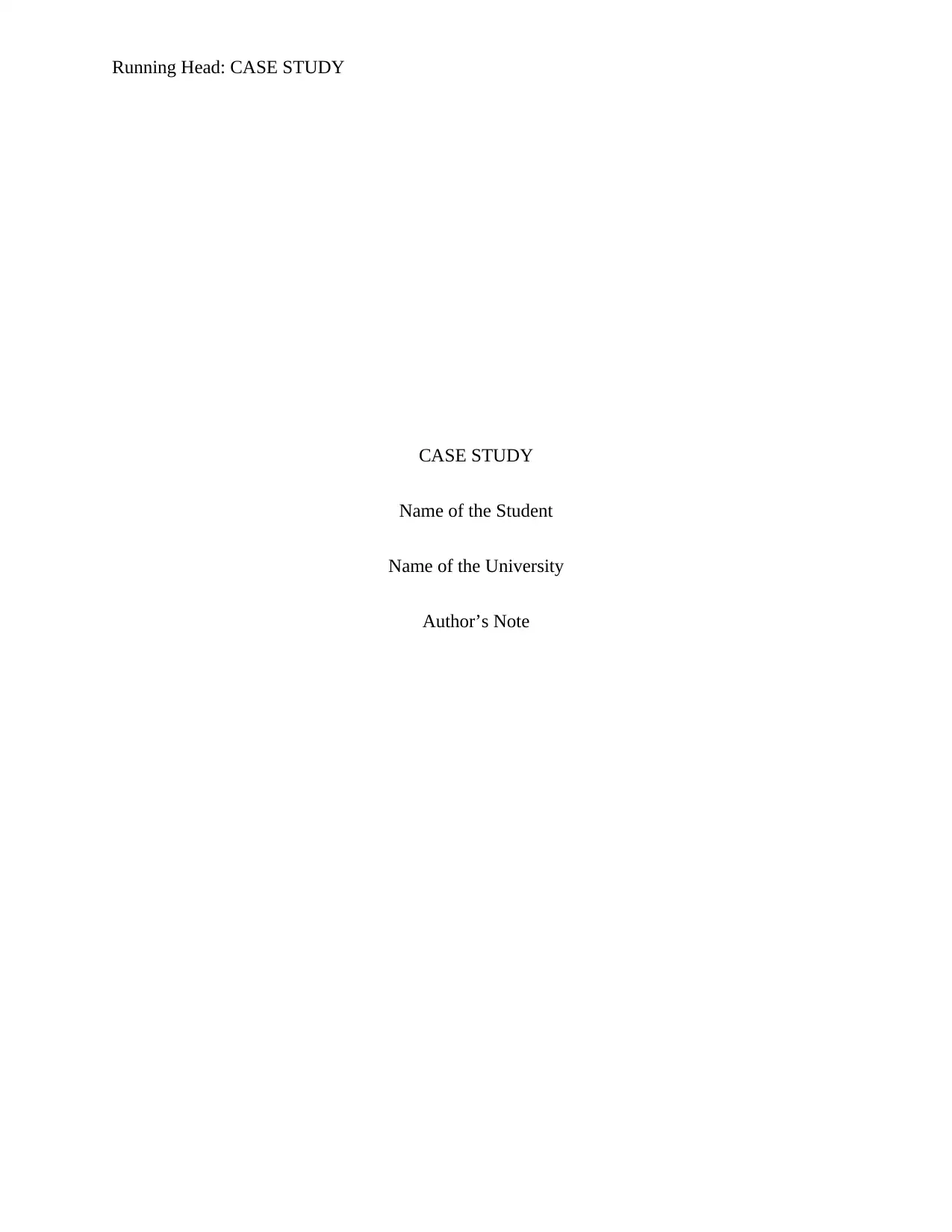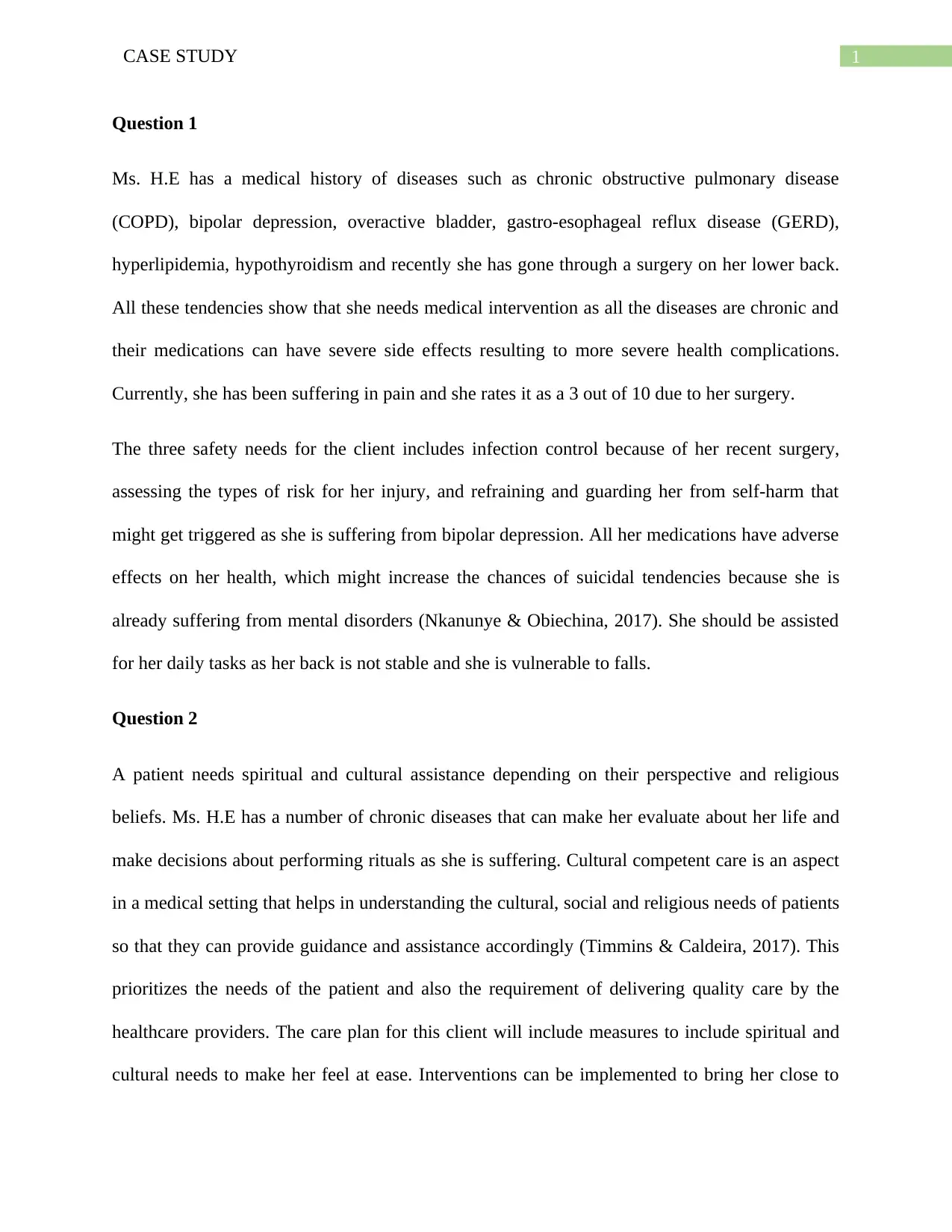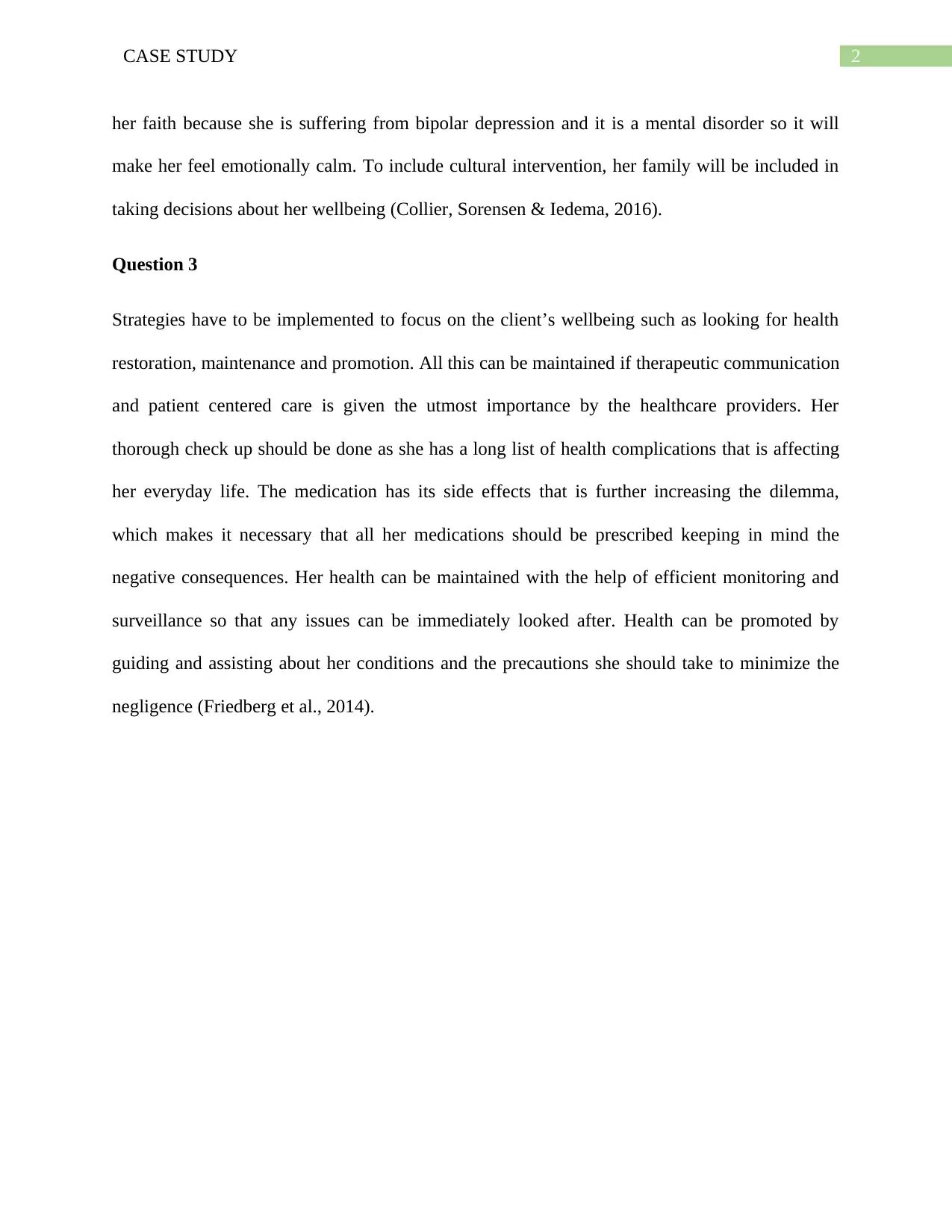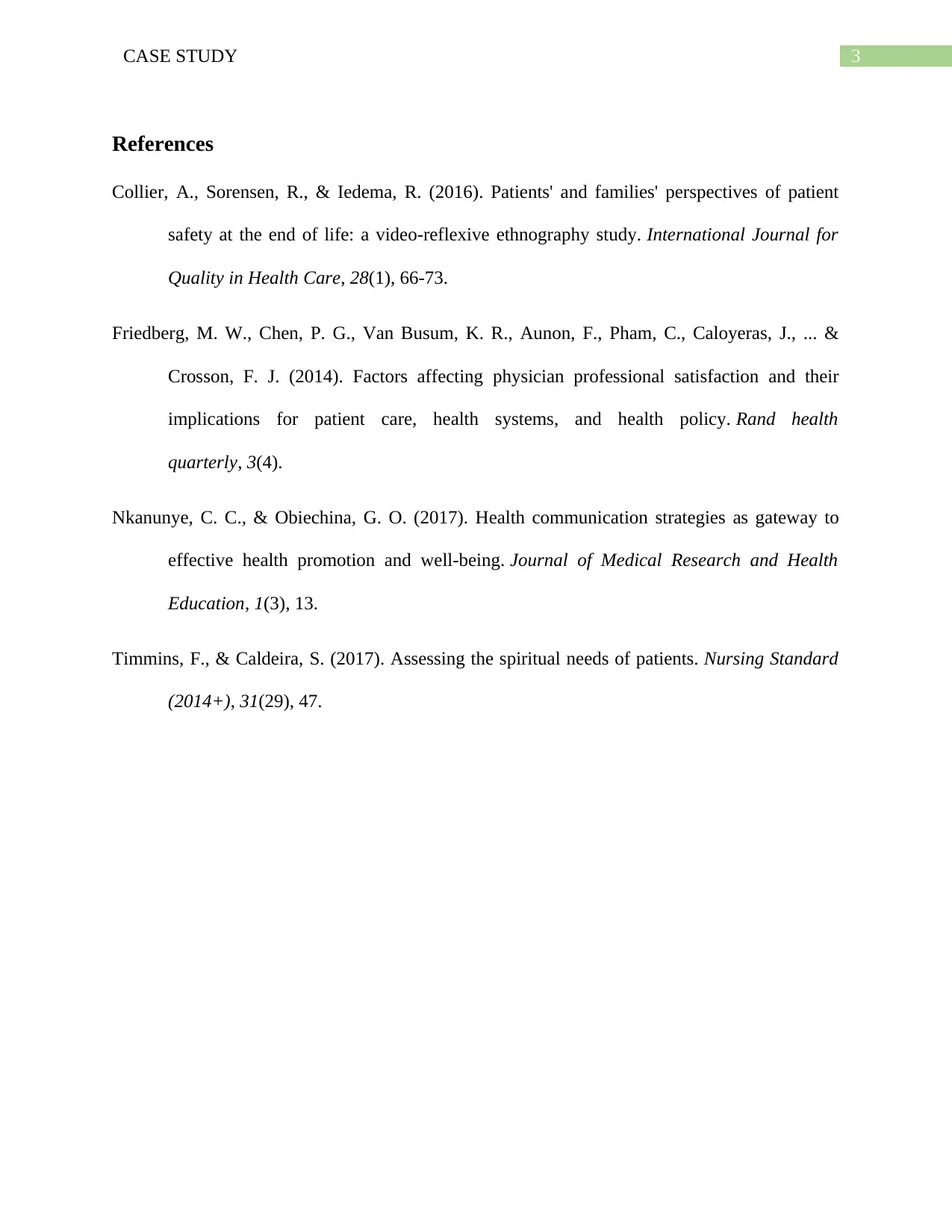Case Study: Patient Needs, Goals, and Interventions
VerifiedAdded on 2022/08/21
|4
|758
|21
Case Study
AI Summary
This case study focuses on a patient with multiple chronic conditions, including chronic obstructive pulmonary disease (COPD), bipolar depression, and post-surgical pain, requiring comprehensive nursing care. The assignment addresses the patient's safety needs, including infection control and risk assessment, and emphasizes the importance of considering cultural and spiritual needs in the care plan. It explores strategies for health restoration, maintenance, and promotion through therapeutic communication, medication management, and patient education. The student provides a nursing diagnosis, sets short-term and long-term goals using the SMART format, and outlines specific nursing interventions to achieve these goals, ensuring a holistic approach to patient care and well-being. The case study highlights the challenges of managing complex medical histories and the importance of individualized care plans.
1 out of 4











![[object Object]](/_next/static/media/star-bottom.7253800d.svg)